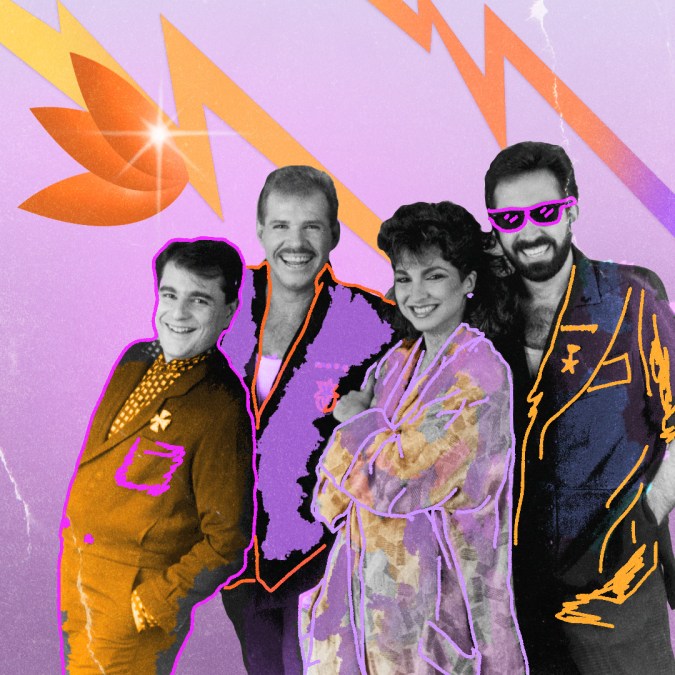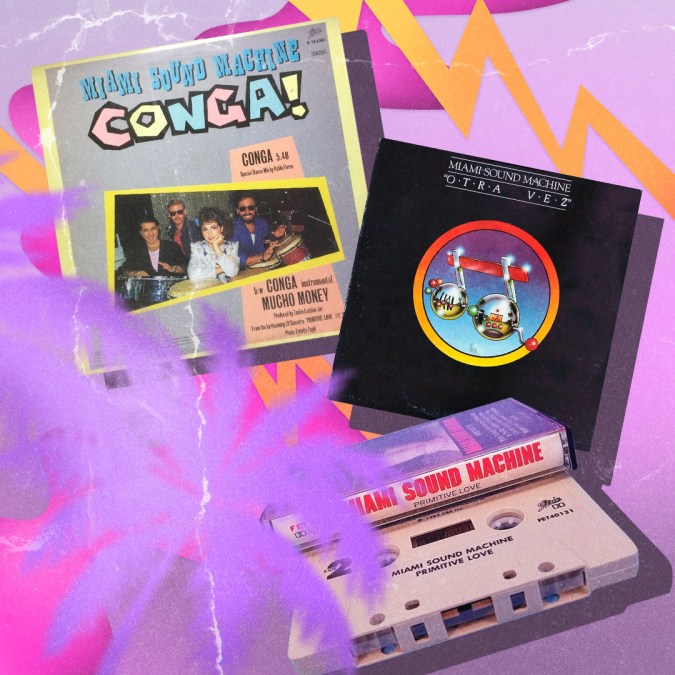If there was a quintessential Latin pop song from the ‘80s that captured the essence of the decade you could do worse than to go with Miami Sound Machine’s “Conga.” It’s supremely catchy, ticks a ton of production hallmarks of the decade and even gets a bit of a reputation for being cheesy. As corny as it might be, “Conga” and the other songs from the album Primitive Love laid the foundation for Latin pop as we know it today; an assertion that’s still valid 35 years after its release.
Before Miami Sound Machine’s magnum opus, there was no unified definition of Latin pop and, in the U.S., there was virtually no Latin pop to speak of. That changed in 1985. The group’s sound made an impact around the world, and it was all thanks to Gloria Estefan and her bandmate/producer/husband Emilio Estefan Jr.
The premise was simple: play the music that moves you and find success in doing it. That was the motivation for Emilio Estefan Jr. to form the Miami Latin Boys in 1975. Two years later, while playing at a wedding, he was approached by a guest who wanted to sing a few Cuban numbers with the band—her name was Gloria Fajardo. Estefan was so impressed that he invited her and her cousin to join the band, changing the name to Miami Sound Machine. By 1978, he and Fajardo were married and on their way to greater success.

Estefan Jr. was ambitious and restless. By their 1982 album Rio, he became the band’s producer and musical director. In 1984, he pushed for the band to sing predominantly in English, yielding the ‘84 album Eyes of Innocence and with it, their first taste of international success. Their single “Dr. Beat” became a huge dance hit in various European countries, spilling over to U.S. club charts and selling 500,000 copies of the album in the process. It gave Estefan Jr. and the band the confidence to follow their instincts.

By the mid-’80s, Miami became a cultural hotspot. The postcards of sandy beaches, hot bodies in bathing suits, and sweltering nights of drinks and music as presented in the media by shows like Miami Vice fueled a fantasy in many people’s minds. The Cuban-American community presented sounds, dancing and gastronomy that became permanently linked with Miami, something not lost with MSM. They knew they needed to embody Miami to the public buying record. That became Primitive Love.
They came up with a formula: Modern pop with cutting edge production and Latin music sprinkled in strategic places. They also came up with the most brilliant songs they could write; every song in Primitive Love could have been a single and done well on the radio. It’s really not a big surprise to learn that it was the 10th best selling record of 1985 according to Billboard, selling 3 million copies in the process—all sparked by the lead single.
“I wasn’t thinking about the market,” Emilio Estefan Jr. told Billboard in 1998. “Gloria was the one to tell me that, if we’re going to be successful, we have to have our sound; we cannot be imitating anybody.” The result was “Conga,” R&B influenced dance-pop with synth lines and horns conversing throughout the song. Aside from being one of the catchiest songs you will encounter in your life, it heralded a new sound without altering any genre in a radical way.

“Conga” peaked at number 10 on the Hot 100 pop chart and it topped the Latin chart while making appearances at the dance and R&B charts as well. It also got more exposure than it bargained for when Pepsi picked it up for a commercial. Then, in 1988, it entered the Guinness Book of World Records by soundtracking the biggest conga line that happened at the Little Havana carnival at Calle Ocho with 120,000 participants. It would have been enough to secure their place in history, but “Conga” wasn’t the only hit from Primitive Love.
“Bad Boy” got to number 8 on the pop charts and was immortalized years later as an interpolation on Ma$e’s bling bling era classic “Feel So Good.” Meanwhile, “Words Get In The Way” did even better, landing at number 5 on the Hot 100. The ballad is unlike anything MSM had released to the general public at that point but still presented yet another fusion of Latin and pop. It’s a romantic song with roots in bolero and balada. Within that track, Gloria found a perfect vehicle for her voice: sincere and emotional, expressing palpable hurt without resorting to vocal fireworks. It strands the line between understatement and sorrow in a beautiful way.
Primitive Love marked the peak for Miami Sound Machine, but the Estefans were just getting started. Their followup album, 1987’s Let It Loose, was billed as “Gloria Estefan and Miami Sound Machine,” since the only remaining original member was Estefan Jr. There were spiritual sequels to “Conga” in the form of “Rhythm Is Gonna Get You” and “1-2-3” that did well on the charts but it was the ballads that took them to the next level.
“Anything For You” became the most popular song in the U.S. for two weeks in 1988. It was enough to secure the Estafan’s new roles as power players in the industry and made Gloria a bonafide star, hitting number 1 on the Hot 100 twice again later, with “Don’t Wanna Lose You” in 1989 and “Coming Out Of The Dark” in 1991.

Meanwhile, Estefan Jr. spent the ‘90s perfecting his formula, understanding what folks wanted from Latine artists. He also nurtured a U.S. Latin music market through his many entrepreneurial endeavors and changed the rules of the industry on the continent. As a producer, he cultivated a sound that was current enough to pass for anything on pop radio but with enough sabor to stand out. Jr. was behind Jon Secada’s ascent and helped Thalia and Alejandro Fernandez break into the U.S. scene as well. His long game paid off with the Latin Boom of the late ‘90s and early ‘00s, when Latinx acts crossed over to U.S. audiences in a big way, reflected on albums by Shakira, Ricky Martin, Jennifer Lopez and Marc Anthony to name a few—all of which bore his production or songwriting credit.
Gloria and Emilio Estefan became the faces of Latin pop not by creating it in its image but by understanding what works and making the best music possible out of it. Their approach to general audiences worked for years and only recently have we seen a slight reverse with big dembow rhythms and vocal cadences being what fans crave.
Still, Primitive Love—a bet from a couple that wanted to be successful doing the music they loved—remains the blueprint.




